Soy Sauce Specialty Store: A Journey into Craft and Flavor
Jul 29,2021
Soy Sauce Specialty Store: A Journey into Craft and Flavor
Jul 29,2021
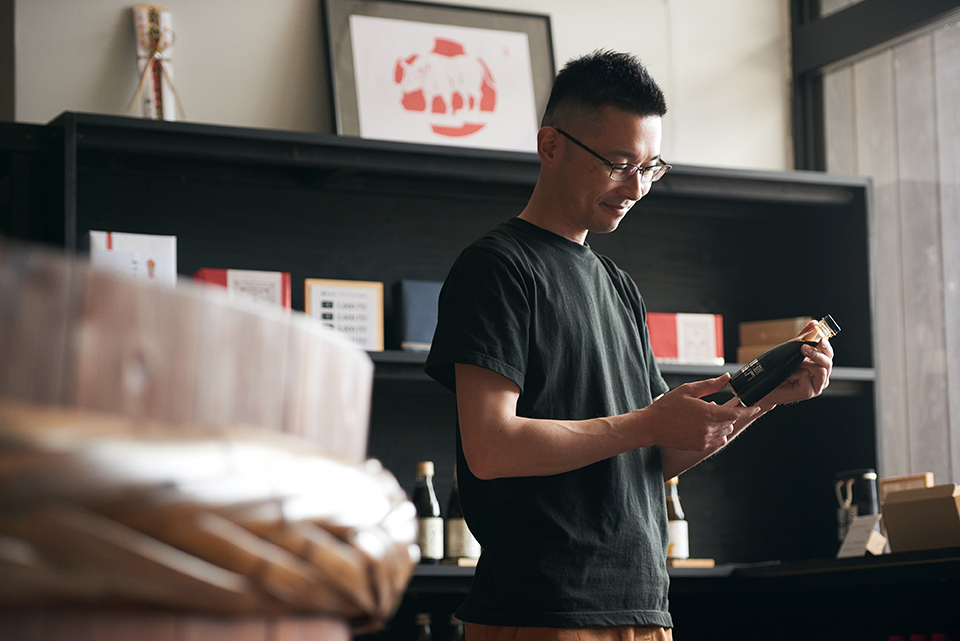

Shokunin Shoyu [Artisanal Soy Sauces] specializes in selling small 100 mL bottles of the finest soy sauces carefully selected from soy sauce breweries all over Japan.
For this article, we talked with Takahashi Mantaro, who runs Shokunin Shoyu while also providing information on new ways to enjoy soy sauce, about his thoughts on the soy sauce breweries that sustain Japan’s traditional food culture and about his new endeavors to expand the possibilities of soy sauce.
Takahashi quit his job at a precision equipment manufacturer in 2007 and ventured out on his own. With the concept of Shokunin Shoyu in mind, he began visiting soy sauce breweries around the country.
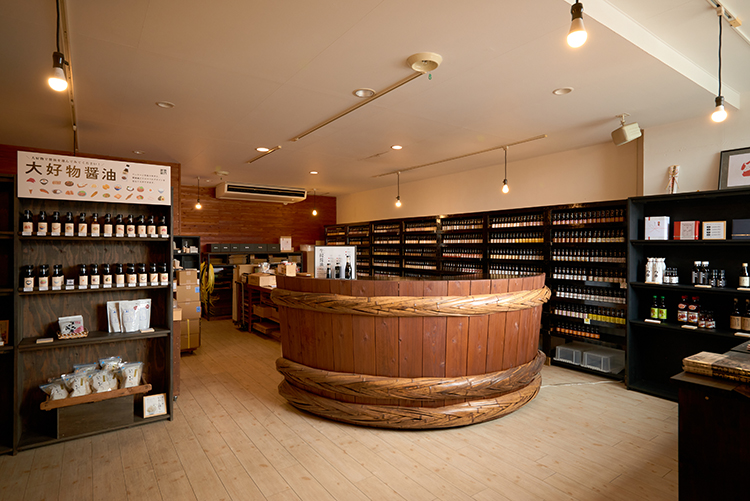
Shokunin Shoyu’s main location in Maebashi features a stunning counter designed to mimic the large kioke wooden barrels used to make soy sauce
Takahashi generally shows up at soy sauce breweries unannounced. In the early days, Takahashi says the most efficient way to find breweries was to ask the brewery he was visiting which brewery he should check out next and go directly there.
“If I were to contact a brewery in advance, they would put me off, thinking I was some kind of salesman. It wasn’t possible back then to search online for the breweries I should visit. The more a brewery was revered and patronized by its local community, the less incentive it had to publicize itself. Very often they didn’t have a website, or if they did, it wasn’t very appealing.”
Takahashi says he can now tell almost intuitively whether a brewery makes delicious soy sauce or not once he sets foot inside the facilities.
“In my personal opinion, breweries that make delicious soy sauce have two characteristics. The first is young people work there. The second is the facilities are kept neat and orderly.”
Breweries with young workers must have some appeal that attracts the young workers, who in turn give the brewery energy. And breweries that keep their offices and packaging areas neat and organized are sure to keep their production areas well organized too. This attention to detail is reflected in steadfast soy sauce production.
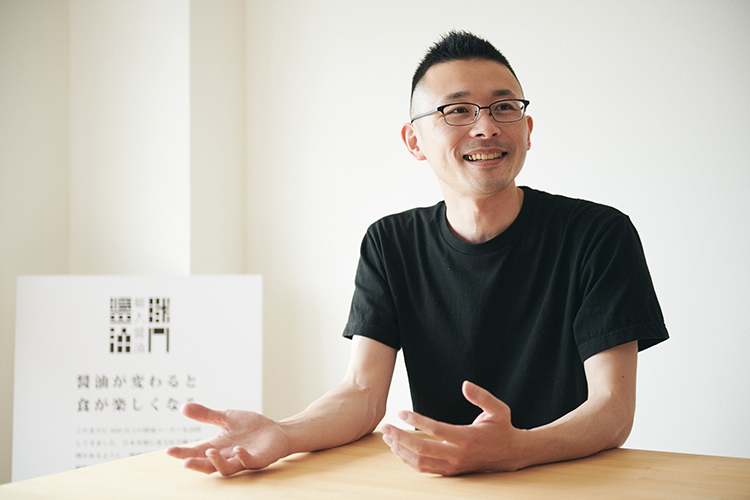
Takahashi Mantaro operates Shokunin Shoyu
Even after Takahashi finds a brewery that meets his standards, surely it must be a hard sell to explain the concept behind Shokunin Shoyu and get the brewery to agree to sell its soy sauce wholesale in tiny 100 mL bottles.
“Actually, it wasn’t hard at all. For sure, they sometimes told me that small bottles will never sell. But every brewery was at least amused by my strange pitch, and nearly everyone agreed initially, even if partly in jest. For the brewery, since each bottle is only 100 mL, filling 100 bottles amounts to only 10 liters. At such small quantities, the risk was low to them, which was fortunate for me. Nearly all breweries gladly took me up on my offer.”
Takahashi has visited over 400 breweries nationwide, and Shokunin Shoyu currently stocks around 100 varieties of soy sauce. As word spread about his venture, interested brewers began to contact him.
Among those who left a lasting impression on Takahashi were Jo Yoshinori from Mitsuru Shoyu in Itoshima, Fukuoka, and Yamamoto Yasuo from the Yamaroku Soy Sauce Brewery on Shodoshima Island in Kagawa. Both men are leaders in the soy sauce industry today.
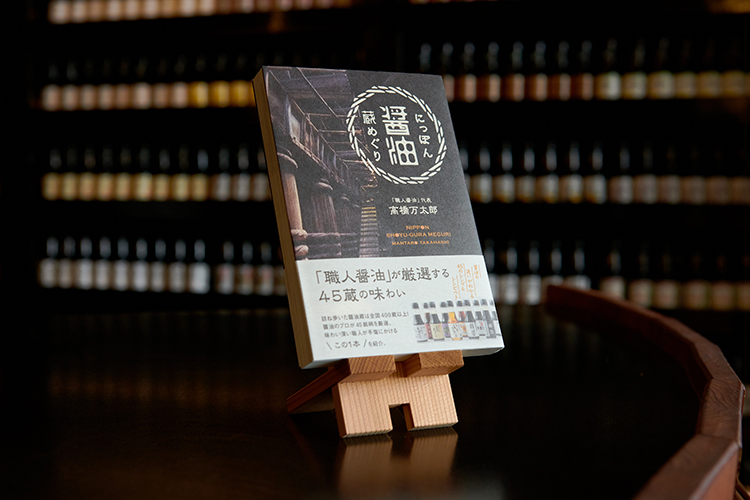
Takahashi’s book A Tour of Japan’s Soy Sauce Breweries describes the soy sauces and the artisans at 45 breweries around the country
“Jo is a soy sauce brewer that other soy sauce brewers want to get behind. To carry on his family’s business, he went to the Tokyo University of Agriculture and during his breaks from university, he stayed at different soy sauce breweries around the country to help out and study the business. Many brewers think of him like a son.”
Looking at the soy sauce industry as a whole, since the streamlining of soy sauce production during the rapid economic growth in the Showa period (1926 to 1989), only a dwindling number of manufacturers still brew their own soy sauce from soybeans and wheat. Most soy sauce makers today purchase kiage shoyu [raw soy sauce], which has been pressed out from unrefined moromi soy sauce, from outside suppliers, and perform just the final processes, such as heating, filtration, and bottling, themselves.
“Mitsuru Shoyu produced soy sauce from raw ingredients until Jo’s grandfather’s time. Jo always had his doubts about purchasing raw soy sauce from a young age, and he’s worked hard to revive in-house brewing.”
With Jo wanting to revive the production of delicious soy sauce and Takahashi wanting to showcase delicious soy sauce in new ways, the two of them hit it off immediately.
Naturally, Takahashi added Jo’s soy sauces, painstakingly crafted from raw ingredients, to the Shokunin Shoyu lineup. The Shokunin Shoyu website also features a series called “Notes on the Struggle to Revive Soy Sauce” penned by Jo, where you can read about his exploits.
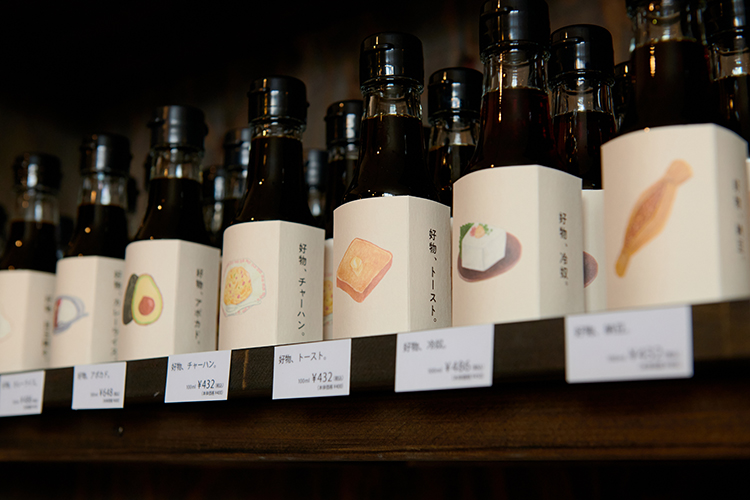
A selection of soy sauces that go well with different foods — even one that pairs well with toast!
Yamaroku Soy Sauce Brewery’s Yamamoto happened to see Takahashi on TV and decided to get in touch with Shokunin Shoyu. Yamamoto is a brewer who learned how to build kioke wooden barrels from veteran barrel-makers to preserve the tradition of making soy sauce in kioke. He has even made his own kioke from scratch. Takahashi got an up-close view of Yamamoto’s strenuous efforts.
“I went along to a kioke-making workshop at Yamamoto’s invitation. My intention, of course, was just to report on the workshop, but I somehow found myself learning the craft alongside Yamamoto from the barrel-makers. Over time, I wound up being one of the people involved in Yamamoto’s challenge to build kioke.”
Steel tanks and stainless-steel tanks always produce consistent soy sauce, whereas producing soy sauce in a wooden kioke causes variations in the end product. Without rigorous controls, the quality of the soy sauce can easily suffer.
Despite this extra work, the reason why some brewers insist on kioke is because microorganisms native to the specific brewery inhabit the barrels and lend distinctive flavors to the soy sauce during the fermentation process. Only kioke let brewers infuse the personality of their brewery into their soy sauces and produce a diversity of flavors.
Takahashi — who maintains a large selection of soy sauces from all over the country and suggests soy sauce pairings with different foods — believes Yamamoto’s mission to preserve the kioke tradition is very meaningful.
There are dozens of varieties of soy sauce. So how do you choose the right soy sauce for a particular dish?
“The industry has a deep-rooted belief that soy sauce is a seasoning that works in the background to enhance the flavors of food and is not something that should jump into the foreground and assert itself. That’s why no one has ever talked about soy sauce pairings before. But I want to bring this idea into the mainstream.”
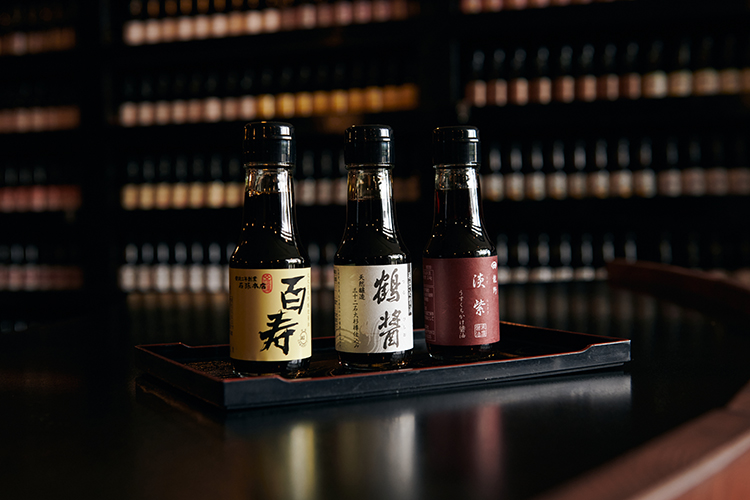
Three of Shokunin Shoyu’s mainstays: [from left] Hyakuju from Ishimago Honten, Akita; Tsurubishio from Yamaroku Soy Sauce Brewery, Kagawa; and Usumurasaki from Suehiro Shoyu, Hyogo
Takahashi espouses a white wine/red wine theory to pair the 100 or so varieties of soy sauce at Shokunin Shoyu with different foods. The theory goes that just as there are delicious wine pairings, such as a crisp white for fish and a full-bodied red for meat, different soy sauce varieties go well with different dishes.
Shokunin Shoyu classifies soy sauces into six main categories: shiro [white], usukuchi [light tasting], amakuchi [sweet tasting], koikuchi [rich tasting], saishikomi [double-brewed], and tamari [dark and rich tasting]. Amakuchi soy sauces are a sweet type of the rich koikuchi variety and are most commonly found in Kyushu and the Hokuriku region. Most classification systems have only five categories and exclude amakuchi, but Shokunin Shoyu has adopted its own classifications.
“As with wine, the lightness or richness of the flavor determines which soy sauces go well with which main ingredient. For example, shiro and usukuchi soy sauces are light in color, high in sodium, and low in umami, so they pair well with light-flavored foods like tofu or white-meat sashimi. Amakuchi and koikuchi soy sauces taste excellent with a wide range of foods, such as natto [fermented soybeans], raw egg over rice, and grilled fish. Saishikomi and tamari soy sauces are darker in color and richer in flavor and suit red meat and sashimi, such as tuna; they also add a new taste dimension to dishes like pork cutlets and deep-fried foods that are normally eaten with Worcester sauce.”
Like wine, once you understand the basic concepts, you will discover many fine-tuned combinations depending on the personality of each brewery and the tendencies of the food ingredients.

Takahashi’s three selections tend toward the connoisseur: [from left] Kasaneshikomi from Katagami Soy Sauce Brewery, Nara; Kinari Usukuchi from Mitsuru Shoyu, Fukuoka; and Eso Gyoshou from Yamasa Chikuwa, Aichi
“Even if you are knowledgeable about soy sauce pairings, it’s not easy to find occasions where you can test them out for yourself. If restaurants served three flavors of soy sauces as a matter of course, then more people would be able to enjoy the differences, which just might change how they regard soy sauces at home.”
To this end, Takahashi has launched a new trial called the Three Soys Project. The idea is to create original Shokunin Shoyu dishes that hold three different soy sauces and supply the tableware through soy sauce producers to restaurants as a way of promoting using different soy sauces from different breweries.
“For example, the reason why whisky highballs are such a sophisticated and widespread drink today is because whisky producers proactively encouraged restaurants to promote highballs. I hope to do something similar with soy sauces.”
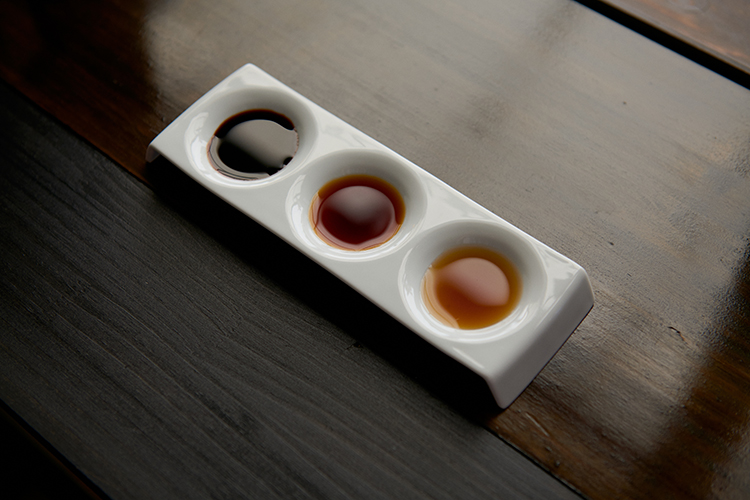
A prototype of the Three Soys Project’s tableware specifically designed for tasting three different flavors of soy sauces
Takahashi is currently developing a soy sauce dish with a modern design and is having prototypes made by Hasami-yaki artisans in Nagasaki.
“I’m reaching out now to various companies around the country, and some have already given the green light. Once this movement gets into full swing, soy sauce breweries will be better able to promote themselves. I want soy sauce to make some noise in the world.”

Born in Gunma prefecture in 1980, Takahashi quit his job at a precision optical equipment manufacturer in 2006 and set up Traditional Design Studio Co., Ltd. the following year. He operates Shokunin Shoyu, a specialty store that offers 100 mL bottles of carefully curated soy sauces sourced directly from breweries. He has written A Tour of Japan’s Soy Sauce Breweries (Tokai Education Research Institute) and co-authored The Book of Soy Sauce (Genkosha).
Shokunin Shoyu’s select soy sauce website for discerning people